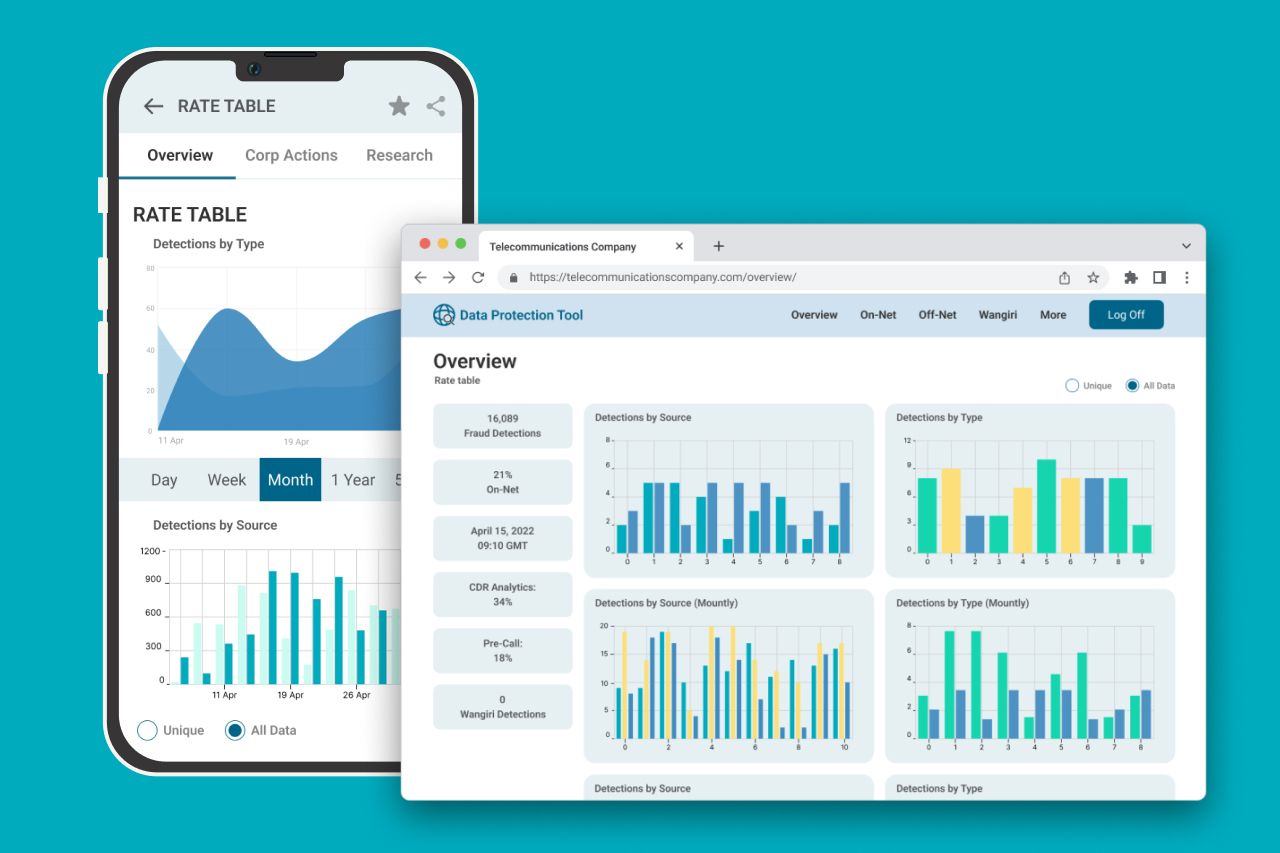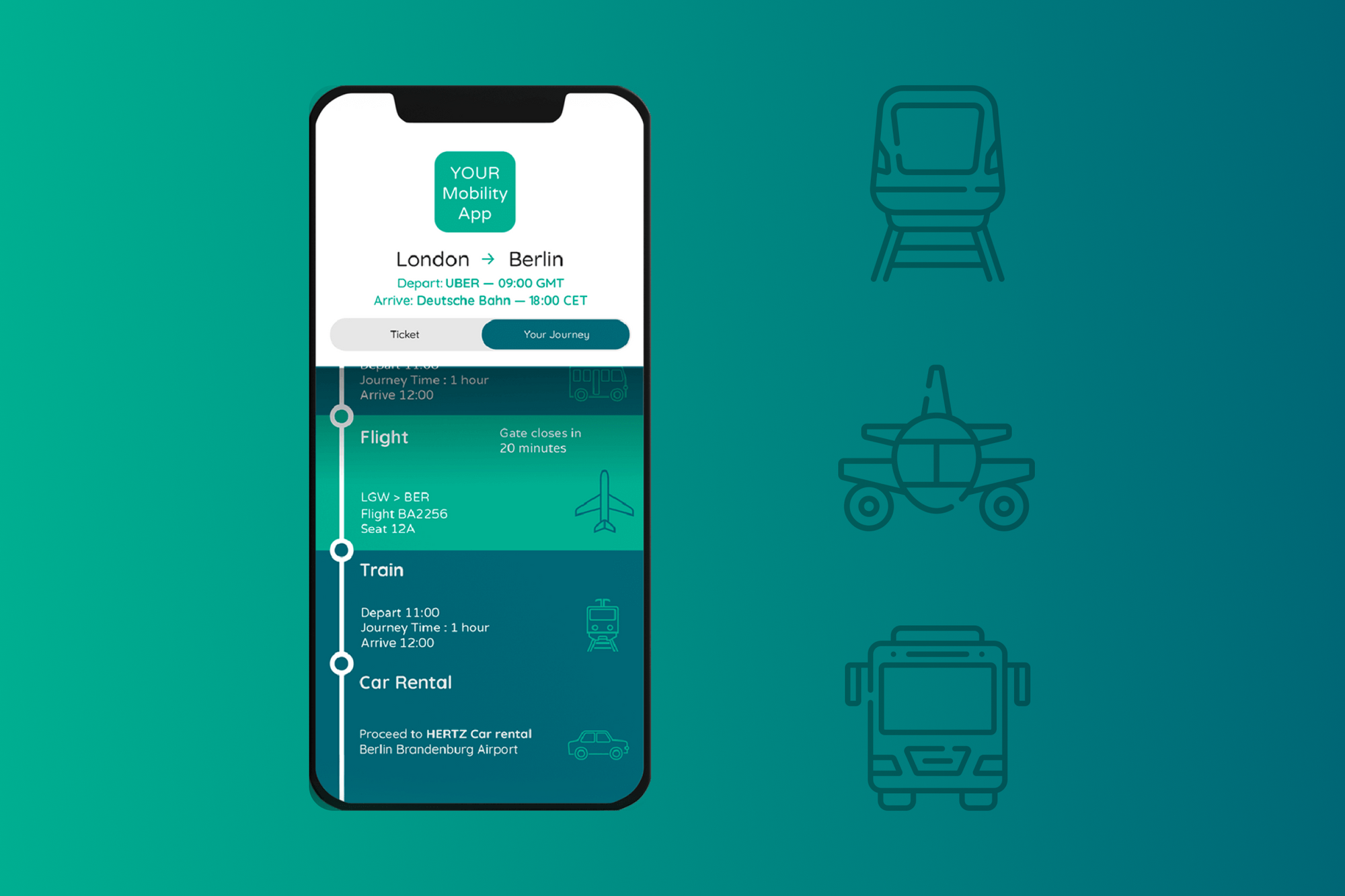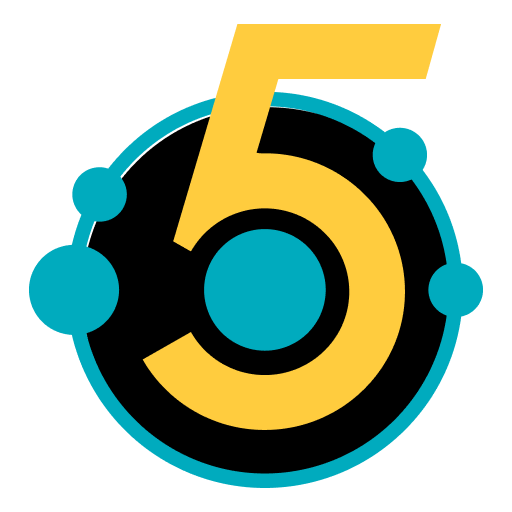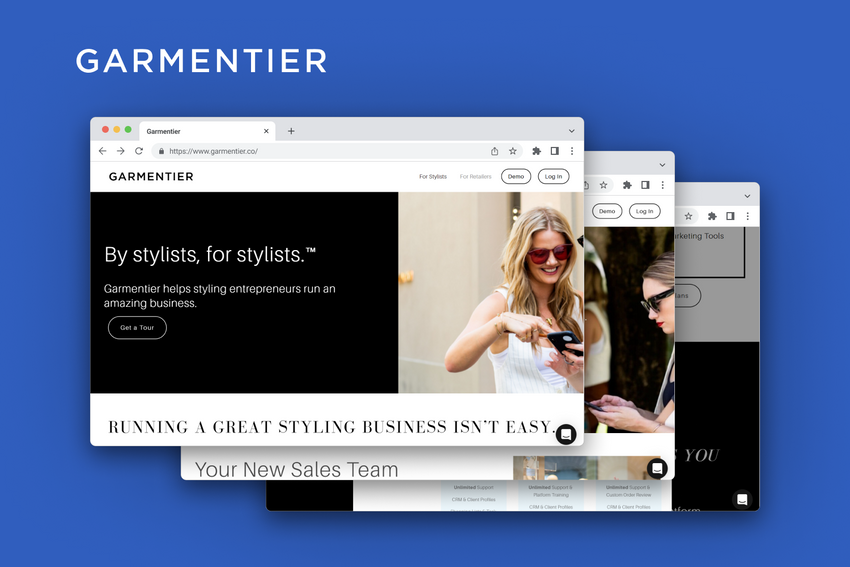15 Software Development Trends to Expect in 2024
We conducted thorough research on the novelties and upcoming trends of the software market and collected the most interesting of them in our new blog article.
The spring has already come and breathed life not only in nature and people but also in the business of hi-tech. What are the software development trends to expect this year? We conducted thorough research and collected the most interesting of them in our new blog article.
Raise of Internet of Behavior (IoB)
All new trends in software development lean towards unprecedented personalization, and the Internet of Behavior is a bright example of it. Being an extension of the Internet of Things, IoB not only gathers tons of data but also tracks and analyzes people's reactions and behavioral patterns when they interact with apps and devices.
IoB is a new word in latest software development trends, but Gartner specialists predict that 40% of people worldwide will have their behaviors tracked just within a year. This will happen due to data gathered via IoB technology has already proved to be extremely useful in creating personalized user experience and improving customer conversion, becoming one of the major trends in the software industry and especially in real estate. For example, numerous media startups analyze YouTube algorithms based on IoB data to make their customers’ video references more interesting for each individual user. Instagram, Facebook, and other social networks use similar algorithms to display personalized news walls and ads that are likely to gain more feedback and reactions from the users.
Total Experience Hits the List of the Latest Web Development Technologies
The high rate of customer experience has already become the main concern and the most important indicator of a successful app for software companies. Recent research by Forbes revealed that 87% of software leaders questioned named customer experience as the top priority and latest software development trends for their companies, and as much as 96% of customers tagged their experience as the key leading to establishing loyalty to the brand. That’s why this year we will see the appearance of such a term as total experience (TX).
TX does not concentrate on separate points of interest like the user, customer, or employee experience, but unites them in a central visualization point with analytics on each segment. Total-experience will allow enterprises and even small businesses to see the big picture on the actual state of things, easily indicate the problem areas to improve, and make sure that their workers, customers, and users get the best possible experience using their apps. Of course, such a thing as total experience is impossible without streamlined and unified communication. This means among other things automation of workflow and quick live-chat customer support technologies, even if it requires the installation of remote working solutions.

Continuous Delivery is a Must-Have
Speaking about trends in application development, businesses nowadays need to always keep their apps working properly and smoothly, getting all the necessary software updates as quickly as possible. This, as well as staying in dynamic contact with customers' desires and problems, is extremely important to stay competitive in a tough software market. That’s why continuous delivery (CD) will become not an advantage, but a must-have standard for software companies across the globe with development teams that need to always keep a deployable version of code. DevOps.com has already reported that 31.7% of developers questioned releasing an update every 2 weeks on average, so the new standard will force the software companies to change their working processes according to shorter sprint cycles.
At the same time, such a tendency has numerous advantages. With continuous delivery, you can collect feedback and reveal app issues much faster, efficiently and at a lower cost, as well as minimize deployment risks, optimize the working processes, and enhance the customer value and general profit of your business.
SEO Website Optimization Hits the Top of Software Development Outsourcing Trends
SEO is now one of the top application development trends, as it stands for the increasing your website traffic through search engine results via numerous tools and technologies (CDN, better hosting, use of website catching, alt tags, metadata, etc.). According to Forbes, 75% of users never go to the second page of search results, and search engines, in general, drive up to 300% more traffic to websites in comparison to social media. This fact spots light on the rapid growth of popularity of SEO among businesses, which will continue to grow next year, placing SEO optimization among top software engineering trends of 2024.
Metrics has also shown that more than 79% of search traffic comes from Google, and only 7% from Bing, 6.5% from Baidu, and 5% from Yahoo. That’s why SEO optimization for Google search machines is in high demand. But regardless of whether it’s Google, Yandex, or Bing, these search engines are built to deliver the best possible customer experience. They analyze technical aspects of your website such as metadata, time to first byte, total time spent on a website, your IP address, type of browser, device, and even OS. Plus, they register which content is relevant, interesting, and engaging for the readers, paying special attention to user experience on a certain website to decide if a website is worth promoting.
With 80% of purchases starting with online research nowadays, SEO website optimization will definitely be among current software development trends. Companies that improve their search engine rankings will get much more organic traffic, positive feedback and get a chance to establish their brand as a top company in the industry.
A Happy Medium With Progressive Web Apps
Progressive web apps (PWA) are becoming extremely popular among mobile engineers. This is a new technology in software development that combines the best options from native mobile and web apps, removing the need to download an app. Thus, users can enjoy a native-like app experience on their mobile phone, which has already made it one of the top current trends in the software development industry.
Such apps can be easily accessed from any device or browser, plus, they are in most cases more responsive, and their development and maintenance costs are lower than those of mobile apps. These factors make them extremely popular among small companies and startups.
Mobile devices took as much as 54% of global internet traffic at the beginning of 2023. This year this number will only grow, and the tendency to revamp web applications into PWAs will continue to increase. In 2024, such trending software technologies as HTML, CSS, JavaScript, React, or Angular will be used to write PWAs.
Cloud is on the Edge With Decentralized Infrastructure
Unlike the public cloud where the storage and compute power are placed in one central place, edge computing brings that all close to the customer. Edge computing is vital for low latency scenarios widely used in gaming, poor network bandwidth, regulatory requirements, real-time use cases in connected vehicles, and IoT devices, so its use will increase in 2024 and beyond, especially in retail and eCommerce with their demand for custom cms development. Major public cloud providers AWS, Azure, and GCP are also providing now numerous edge computing services: Google Distributed Cloud, Azure Stack Edge, Azure Edge Zone, AWS Snow Family, AWS IoT Greengrass, etc.
Plus to the edge computing trend, companies are trying to overcome vendor locking, closely connected with public clouds. From the moment you move your data and infrastructure to some public cloud provider, you are becoming vendor-locked, companies are trying to provide services that are API compatible with the widespread public cloud Services. Among such are MinIO, which is compatible with S3, Volterra, which works with Distributed Cloud Services, LightOS, suitable for Cloud Native Storage, and others. Plus, Google corporation is actively working on bringing its popular services like Big Query into AWS and Azure public Clouds.
Single-Page Applications are Still Among Web Development Trends
SPAs (Single-page applications) appeared on the list of software trends several years ago because these web apps can load a single HTML page and dynamically update content in a user’s browser without refreshing the whole page. SPAs are broadly used in the development community, including such giants as Google, Facebook, and Twitter.
These apps are cost-effective, relatively easy to create using the AngularJS framework and consume little space on servers. At the same time, SPAs provide information to users without any fries on a given single page. This simplicity in use and development brings SPAs among Frontend Development Trends, and it will continue to keep its positions in 2024.
Serverless Architecture is Among Software Development Outsourcing Trends Again
The serverless architecture will be on a top software technologies list for 2024 as well as in the current trends in software development. They have already proven to be an ideal solution that helps to reduce system overloading, data loss, as well as costs on development. It runs on cloud servers, which allows users to run code for any application or backend service with no need for administration. It means cutting costs, time, and resources on managing, provisioning, and upgrading servers. That’s why Google, Amazon, and Microsoft are already using serverless architecture to perform tasks like downloading file backups, delivering notifications, exporting objects, and building such products as chatbots, IoT apps, etc. These factors allow Marketsandmarkets experts to predict that this market will grow as much as 3 times by 2025 up to $21.1 billion and will be on the top of outsourcing software development trends.
Low-Code Development for Improved Efficiency and Optimized Costs
The idea of building apps with no or little coding involved has gained lots of followers in 2023 and seems like the future of software development. Low-code development allows companies to build applications with minimal coding and resources involved: it greatly simplifies the development processes connected with UI\UX, flow charts, drag-and-drop tools, integrated business logic charts, etc.
For startup founders, low-code development is also a perfect solution: it allows them to quickly test business ideas, implement requirement changes, and test the work of the app with the users with little resources and costs involved.
According to the report held by Mendix experts, 45% of businesses prefer low-code development as it cuts costs greatly and reduces dependency on skilled experts. Being one of the latest technologies in software development, this niche is expected to grow up to $187 billion in revenue by 2030.
Dark Mode is Everywhere in Web Development Trends
Dark and low-light websites are becoming more and more popular each year and are one of the top trends in software development for 2024. Studies have found that at least 8 out of 10 users prefer to use dark mode whenever possible, so companies will continue to offer websites and apps with dark mode interfaces (UIs). Social networks like Facebook and Twitter have already added this feature, providing an easy way to switch between the two modes. Because lots of web engineers provide a built-in mode switching the interface to the dark theme, this trend is going to become a standard this year and beyond and even become a default functionality.
Optimized Native Cybersecurity as the Latest Web Development Technology
Cybersecurity has already become one of the most crucial concerns of 2024, as every company, no matter the size, is vulnerable, which was proved in June 2021, when hackers were able to scrape the accounts of 700 million LinkedIn users with all their personal info including phone numbers. And according to Cloudflare, experts the number of DDoS (distributed denial of service) attacks nearly doubled each quarter since 2020, which means a significant loss of revenue and a damaged reputation for hundreds of companies. That’s why optimized cybersecurity is definitely among the latest software development trends.
Web engineers worldwide are trying to better protect companies’ and users’ data using modern software development tools. For this purpose, multi-factor authentication like Google Authenticator, patch management, and Security Operation Centers (SOC) are becoming more popular this year. Plus, all the public clouds and Linux will also work harder with security, including their browser extension development tools.

Another cybersecurity concern is the current Open Source development model. A single developer often creates a vital and frequently used by others module or library in his spare time for free, like log4j. But if that module is compromised, then numerous companies all over the world will be affected. This cybersecurity question remains open, but probably it will get some improvement this year.
Improved and Personalised Voice Search
Voice search was first proposed to users by Google in 2011, and from that time it was steadily among current trends in software development. A recent study by Grand View Research showed an astonishing market growth of AI-based virtual assistants Alexa and Siri and predicted even further growth in the use of such devices this year, like Google Home and Apple HomePod. Experts from Juniper Research even predict that up to 60% of all households worldwide will have such voice assistants by the end of 2024. What’s interesting, users do not just buy smart speakers to conduct a voice search, much more often they use their telephones and even smart watches to do this. These factors make voice search a must-have option for a search engine. It ranks now higher and more frequently on results pages, making software engineers work on its optimizing and personalization.
Automated Code Review is Gaining Popularity
According to the survey held by SmartBear, almost 80% of participants, which are mostly developers, architects, and systems engineers, stated code review as the number one thing a company can do to make its code quality better. Automated code review is the latest technology in software development that makes this process even simpler, as it allows automatically reviewing a source code via some predefined set of rules, and identifying inefficient parts of code, potential vulnerabilities, or bugs. These tools usually only warn the user with signs of some error or problem with code, but sometimes it can even automatically fix bugs or guide engineers on how to fix them.
Automated code review is gaining popularity rapidly, as a survey conducted by SmartBear proved that it’s only 15% less popular among software companies than ad hoc or synchronous code review methods. They also predict that by the end of 2024, more and more companies will implement these tools in the code review process, which place automated code review in a list of the latest trends in web development, and allow developers to spend more time on creating new features and apps rather than on reviewing the existing ones.
Blockchain: Now is More Than Cryptocurrency
Blockchain is often imagined as connected strictly with cryptocurrency, although it is just its most known use case, and blockchain is much more than cryptocurrency. Last year, we saw the rise of a new and highly popular use-case of this technology: Non-Fungible Tokens (NFT), which was among Web Development Trends. Now it’s used primarily in digital art, but this is only the beginning of the blockchain era. Plus, many companies are now planning to shorten their massive energy consumption, moving from the energy-intensive “proof-of-work” to the energy-saving “proof-of-stake” scenario. One of the most popular and widely used blockchain cryptocurrencies Ethereum will move to the green “proof-of-stake” model this year.

AI-Enhanced QA Process
AI technology remains among software trends during the last 5 years, as it helps greatly with tedious, repetitive, and predictable tasks, while humans can focus on tasks requiring more resources. AI can easily transform and optimize your business workflow, overcoming numerous challenges of humans.
That’s why continuous testing, dominated by the agile and CI/CD approach, is coming onto the scene, where several AI-driven tools also can generate the source code for the developers automatically. Tabnine, GitHub Copilot, and Codota are among such. Although they are still in an early stage of development, we expect these AI-driven code assistants to become one of the top software development trends 2024.
AI tools can help generate a test suite with test data automatically and analyze software output to highlight errors and bugs not easily found with traditional functional tests written by humans. Moreover, AI agents can learn and develop themselves right in the testing process, as they evolve after changes in the codebase and find new app functionality without human intervention.
AI in QA automation can also help to test apps that are enhanced with AI-powered visual verifications. Also, they can determine whether to run a test script, monitor API testing, etc. Thus, the QA teams can use AI testing tools to get the best test coverage in less time and with greater accuracy.
If you need custom development services and want to implement a project idea with one of the technologies mentioned, we’re always happy to help you with a free technical consultation and the right development team at Fively as we are one of the top software development companies.
Feel free to contact us.
Stay with us if you want to keep your hand on the pulse of every change in the world of technology and subscribe to be the first to get new articles.
Need Help With A Project?
Drop us a line, let’s arrange a discussion















